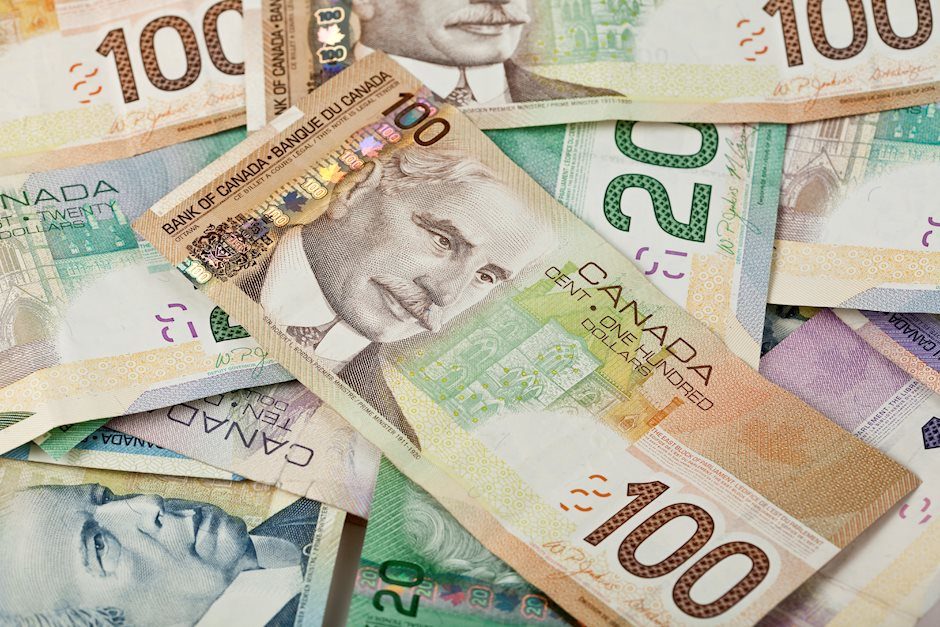USD/CAD Price Forecast: Consolidates above 1.3500, bulls flirt with 200-hour SMA resistance
- USD/CAD struggles to gain any meaningful traction and is influenced by a combination of diverging forces.
- Dovish Fed expectations weigh on the USD; bets for a larger BoC rate cut keep the CAD bulls on the sidelines.
- The setup warrants caution before positioning for an extension of last week’s recovery from a multi-month low.

The USD/CAD pair struggles to capitalize on last week's goodish recovery from its lowest level since March 8, albeit manages to hold above the 1.3500 psychological mark through the first half of the European session on Monday.
The US Dollar (USD) selling bias remains unabated for the third straight day amid rising bets for a more aggressive policy easing by the Federal Reserve (Fed), which, in turn, is seen acting as a headwind for the USD/CAD pair. Meanwhile, rising geopolitical risks in the Middle East lend some support to Crude Oil prices and underpin the commodity-linked Loonie, further contributing to capping the currency pair. That said, expectations for a larger rate cut by the Bank of Canada (BoC) keep a lid on the Canadian Dollar (CAD) and limit the downside for spot prices.
From a technical perspective, oscillators on the daily chart – though have been recovering from lower levels – are yet to confirm a positive bias and warrant some caution before positioning for any meaningful upside. Meanwhile, the USD/CAD pair now seems to have found acceptance above the 38.2% Fibonacci retracement level of the recent downfall from the monthly peak and is currently placed around the 200-hour Simple Moving Average (SMA). Any subsequent move-up is likely to attract fresh sellers near the 50% Fibo. level, around the 1.3535 area region.
The next relevant hurdle is pegged near the 1.3555-1.3560 area, or the 61.8% Fibo. level, and the very important 200-day SMA, currently pegged just ahead of the 1.3600 mark. The latter should act as a key pivotal point, which if cleared decisively should lift the USD/CAD pair to the monthly peak, around the 1.3645-1.3650 region. Some follow-through buying will be seen as a fresh trigger for bullish traders and pave the way for a further appreciating move in the near term.
On the flip side, a sustained break below the 1.3500 mark is likely to find some support near the 1.3465 region, below which the USD/CAD pair could retest the multi-month low, around the 1.3420 region. Some follow-through selling below the 1.3400 mark will pave the way for the resumption of the recent well-established downtrend witnessed over the past two months or so.
USD/CAD 1-hour chart
Canadian Dollar FAQs
The key factors driving the Canadian Dollar (CAD) are the level of interest rates set by the Bank of Canada (BoC), the price of Oil, Canada’s largest export, the health of its economy, inflation and the Trade Balance, which is the difference between the value of Canada’s exports versus its imports. Other factors include market sentiment – whether investors are taking on more risky assets (risk-on) or seeking safe-havens (risk-off) – with risk-on being CAD-positive. As its largest trading partner, the health of the US economy is also a key factor influencing the Canadian Dollar.
The Bank of Canada (BoC) has a significant influence on the Canadian Dollar by setting the level of interest rates that banks can lend to one another. This influences the level of interest rates for everyone. The main goal of the BoC is to maintain inflation at 1-3% by adjusting interest rates up or down. Relatively higher interest rates tend to be positive for the CAD. The Bank of Canada can also use quantitative easing and tightening to influence credit conditions, with the former CAD-negative and the latter CAD-positive.
The price of Oil is a key factor impacting the value of the Canadian Dollar. Petroleum is Canada’s biggest export, so Oil price tends to have an immediate impact on the CAD value. Generally, if Oil price rises CAD also goes up, as aggregate demand for the currency increases. The opposite is the case if the price of Oil falls. Higher Oil prices also tend to result in a greater likelihood of a positive Trade Balance, which is also supportive of the CAD.
While inflation had always traditionally been thought of as a negative factor for a currency since it lowers the value of money, the opposite has actually been the case in modern times with the relaxation of cross-border capital controls. Higher inflation tends to lead central banks to put up interest rates which attracts more capital inflows from global investors seeking a lucrative place to keep their money. This increases demand for the local currency, which in Canada’s case is the Canadian Dollar.
Macroeconomic data releases gauge the health of the economy and can have an impact on the Canadian Dollar. Indicators such as GDP, Manufacturing and Services PMIs, employment, and consumer sentiment surveys can all influence the direction of the CAD. A strong economy is good for the Canadian Dollar. Not only does it attract more foreign investment but it may encourage the Bank of Canada to put up interest rates, leading to a stronger currency. If economic data is weak, however, the CAD is likely to fall.
Author

Haresh Menghani
FXStreet
Haresh Menghani is a detail-oriented professional with 10+ years of extensive experience in analysing the global financial markets.


















